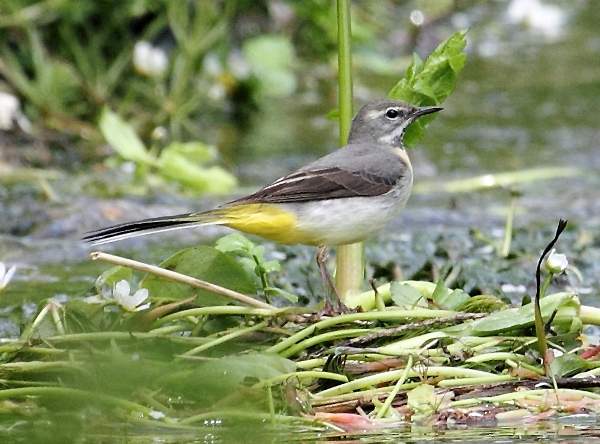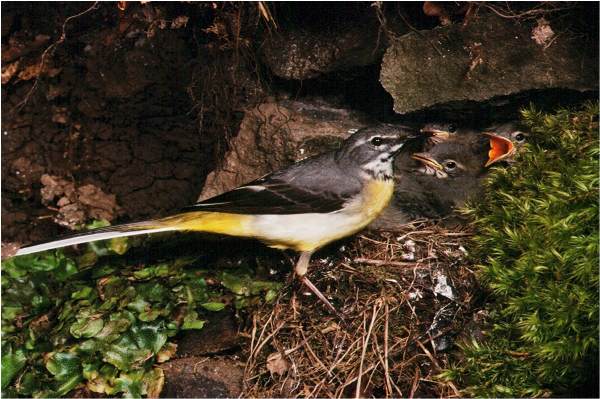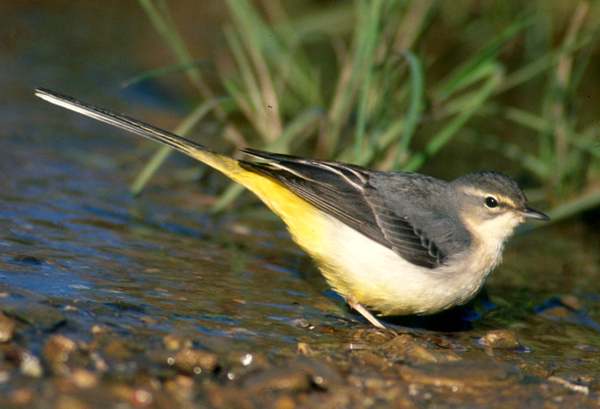Motacilla cinerea - Grey Wagtail
Phylum: Chordata - Class: Aves - Order: Passeriformes - Family: Motacillidae
Identification - Distribution - Lifecycle - Food - Predators - Reference Sources

These lovely birds are very common in Britain and are less shy than many other birds of the riverside. With an overall length of approximately 19cm and a typical wingspan of 26cm, the splash of yellow and the habbit of wagging their tails up and down when at rest makes Grey Wagtails easy to spot. (The genus name Motacilla comes from the Latic verb motare, meaning to move, and refers to the fidgety tails of birds in the wagtail group.)
Grey Wagtails feed on insects, most of which they collect from emergent vegetation and stones beside the stream. They usually make steam-side nests among tree roots or in crevices in rock walls and revetments. Breeding occurs between April and July, with three to six eggs in the first clutch and fewer in any later broods.

Grey Wagtails and yellow wagtails are often confused; the grey wagtail is resident here all the year round and has a grey head, grey-blue back and very long tail. The Yellow Wagtail, with which it is sometimes confused, is a summer visitor; it is somewhat smaller, has an olive back and a shorter tail and the male in particular has more of a yellow face.

Acknowledgements
This page includes pictures kindly contributed by Will Bown, Melvin Grey and Ray Tipper.
Please Help Us: If you have found this information interesting and useful, please consider helping to keep First Nature online by making a small donation towards the web hosting and internet costs.
Any donations over and above the essential running costs will help support the conservation work of Plantlife, the Rivers Trust and charitable botanic gardens - as do author royalties and publisher proceeds from books by Pat and Sue.

